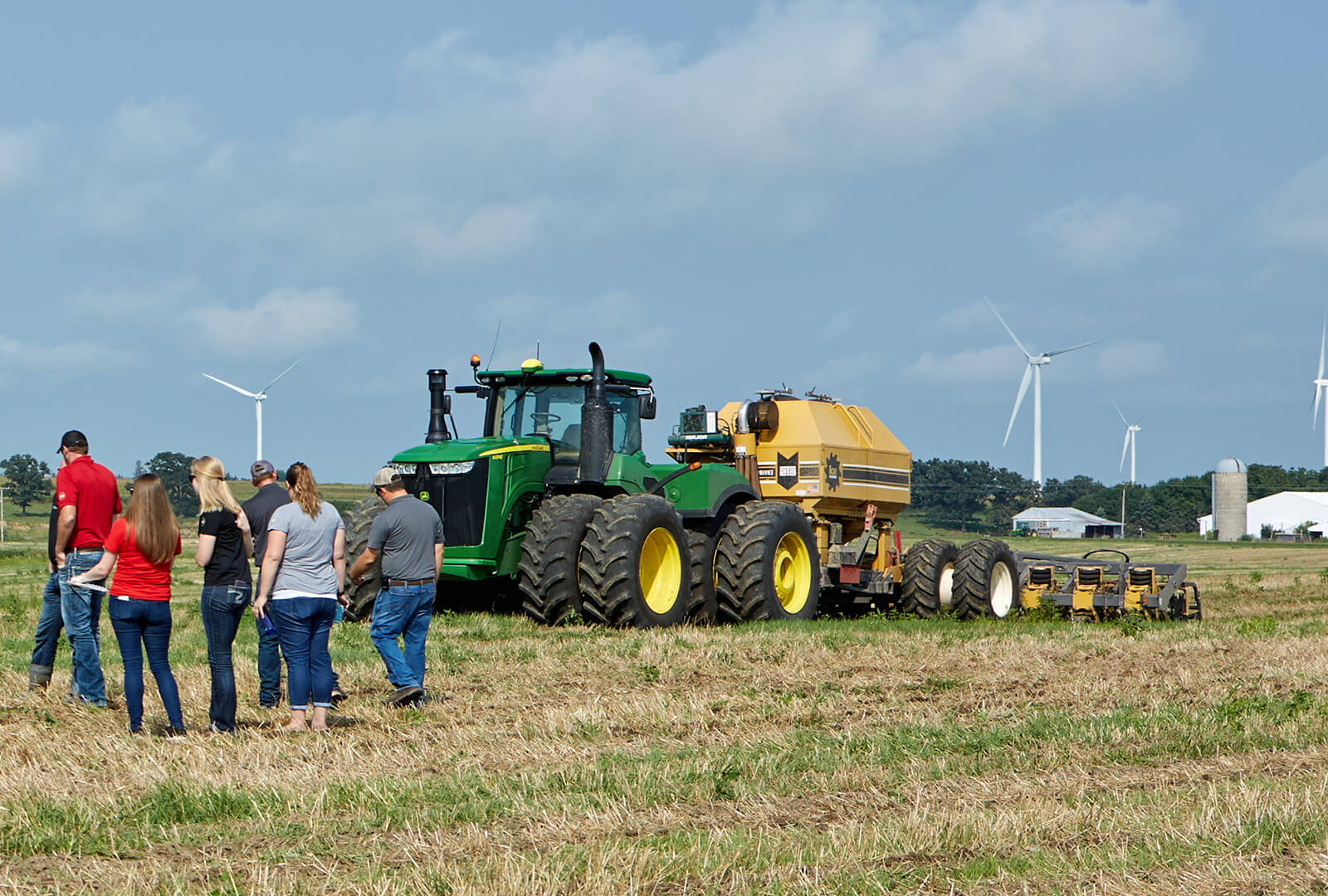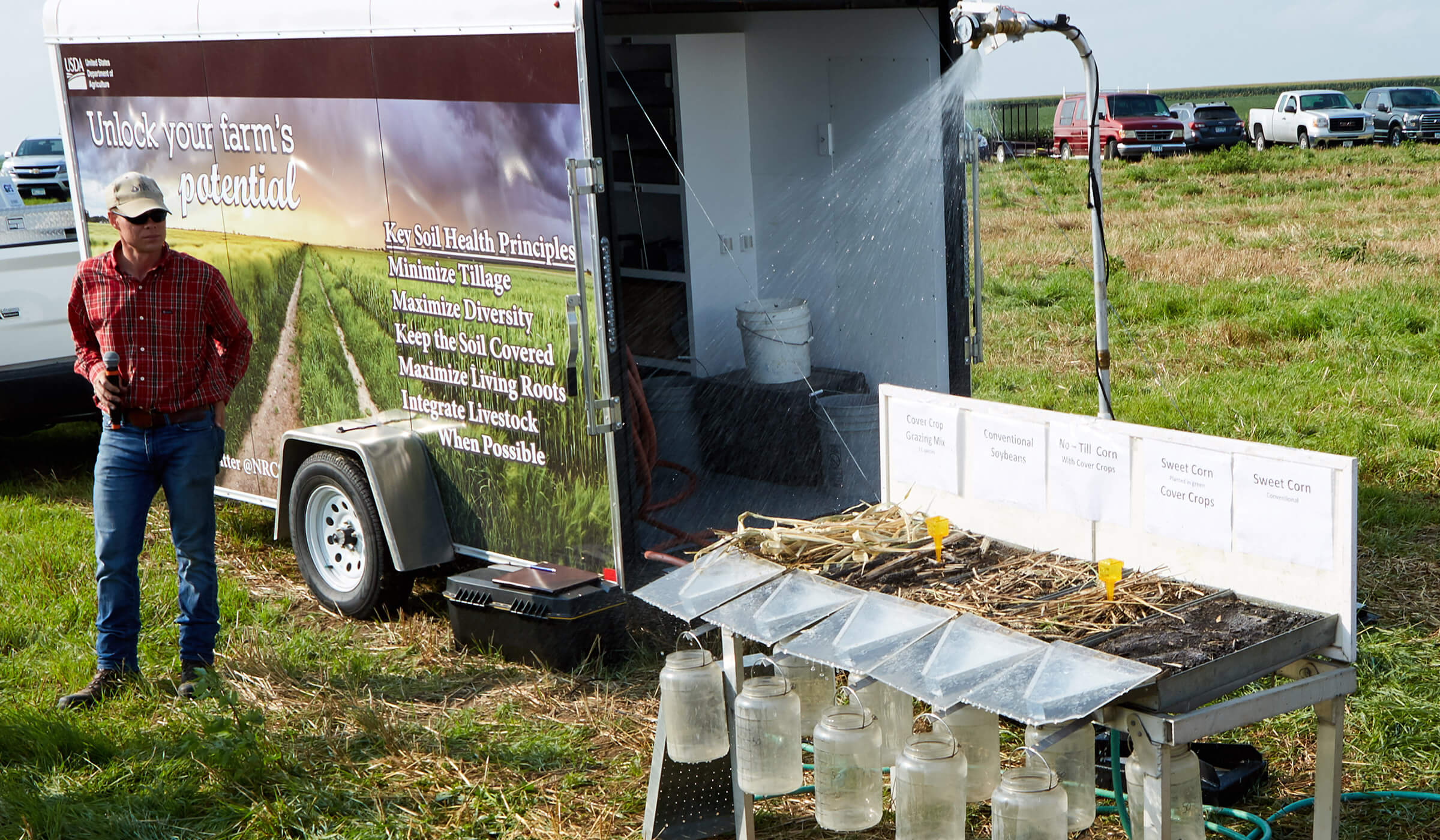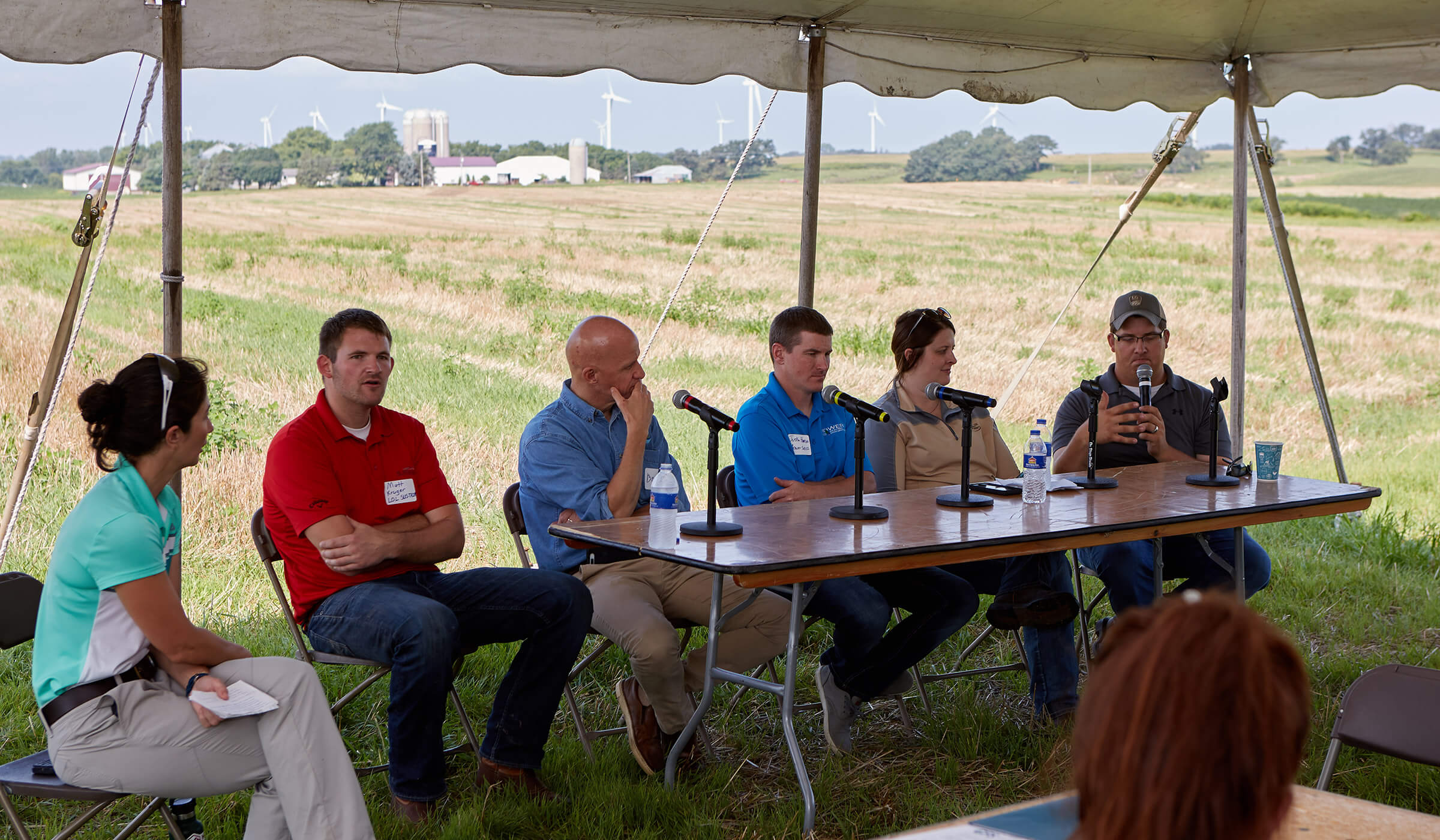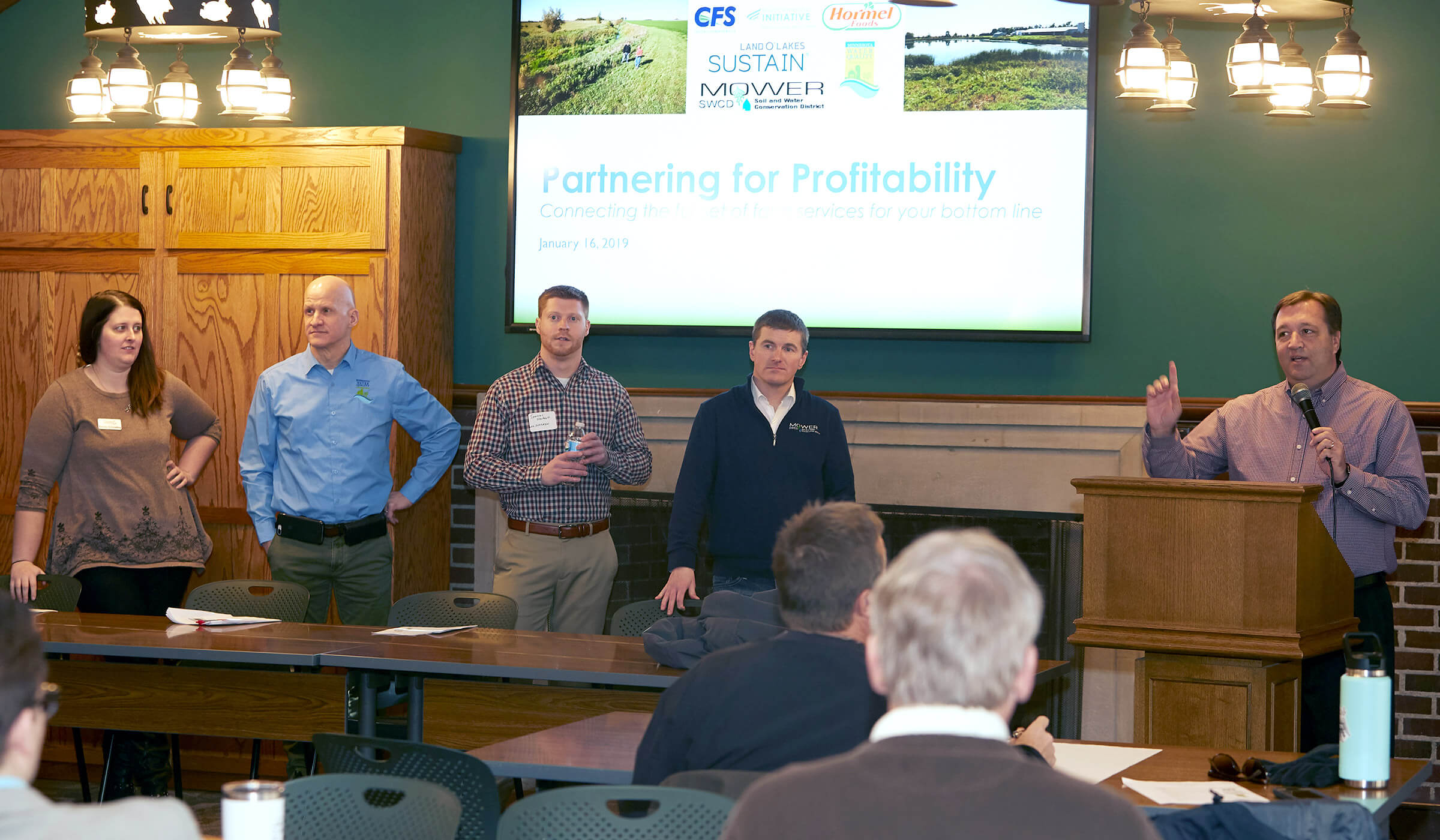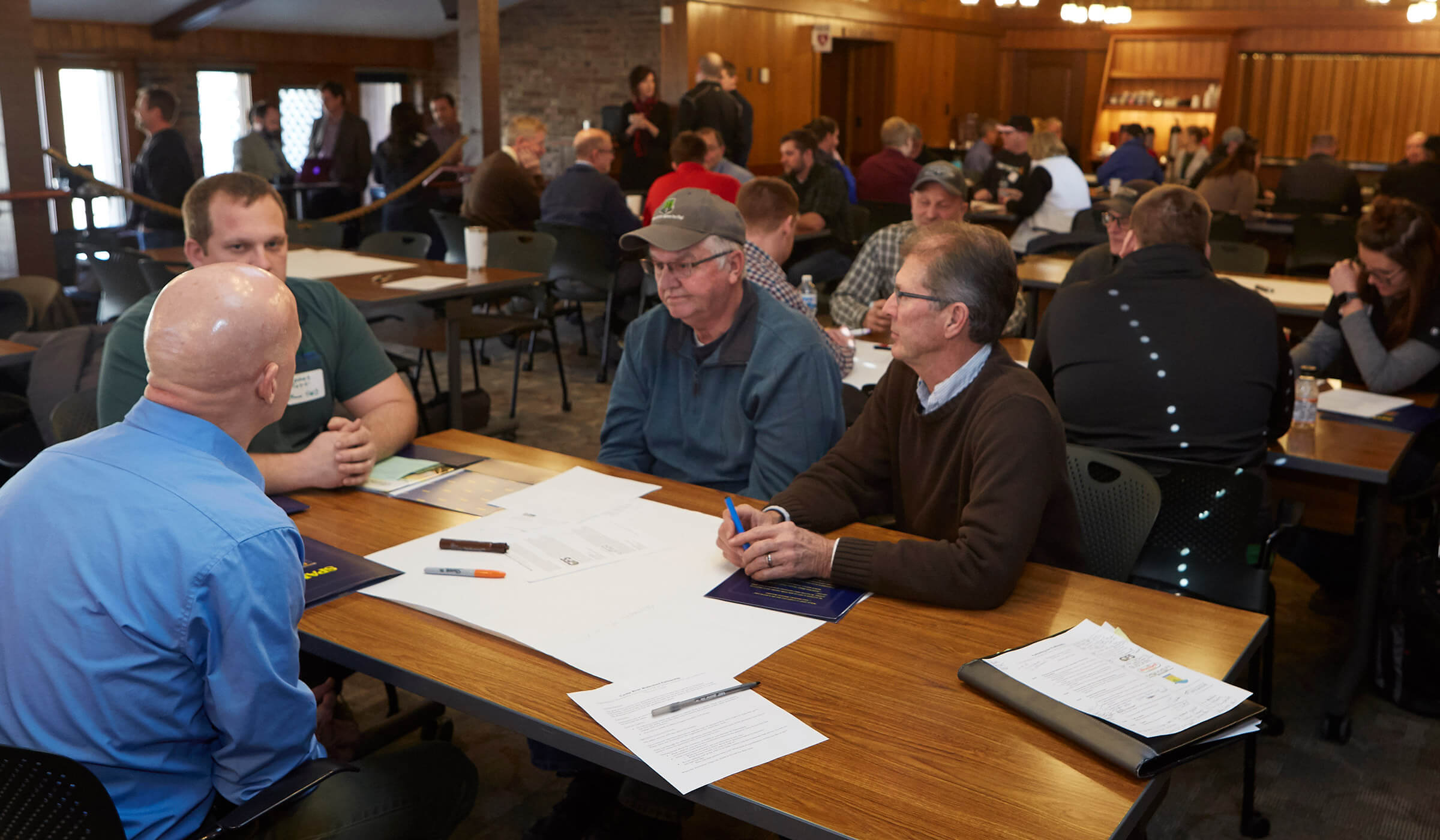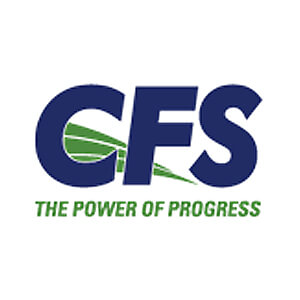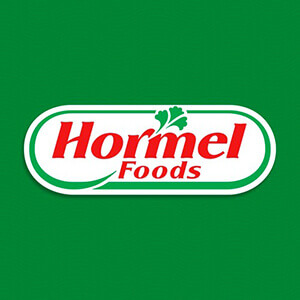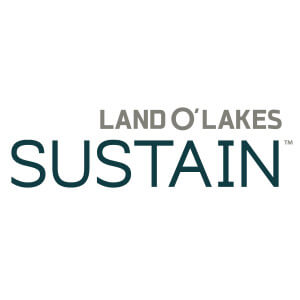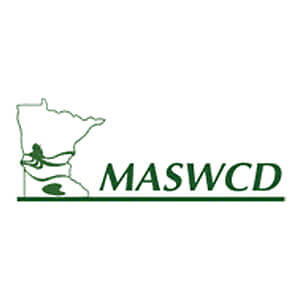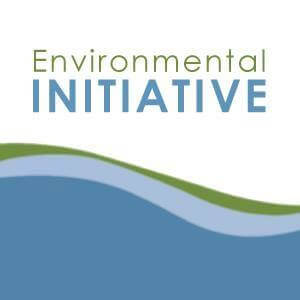Justin talks about dirt the way a Silicon Valley entrepreneur with a Minnesotan accent might. The big idea he’s touting is a technique called strip tillage.
When you say “increasing yield” to farmers, their ears might perk up a bit. Those words mean dollar signs in the world of price-volatile corn. What Lawler knows is that these farmers have every reason to be conservative with their methods. You can’t just tell farmers to risk a year’s profit on a new idea, you have to show that it works. The proof is in the buckets — traditional management loses a lot of dark, soil-rich water off the top, but strip-tilled soil soaks it in.
New Math
“Ten years ago, if we wanted 200-bushel corn yield, we’d go out and apply 200 to 220 pounds of nitrogen.” Justin says that was common practice. “Now, we’re raising 240-bushel corn and we’re going out with maybe 150 pounds of nitrogen.”
Strip tillage is part of the change. The Krells use a different method of tillage than their neighbors do. The strip-till machine only disturbs the top 8 inches of soil, rather than sinking long blades deep into the ground and turning up huge clods of black dirt. Having machinery and fields that look different is a big risk in a close-knit community where many people do the same job.
But less nitrogen to produce more grain means more money in the bank. It’s thanks in part to technology that Justin is saving money and keeping his soil healthier. It’s a bonus that this kind of money-saving management means there’s less nitrogen potentially in the watersheds.
Proceeding with Excitement
With demonstrations like this one, the Cedar River Watershed Partnership hopes to bring everyone to the table in a spirit of teamwork. The morning’s tillage demonstration is designed so that farmers can see for themselves what the tools are and how they might work. In short, they’re opening up resources for farmers and giving them opportunities to see how things work before having to make investments themselves.
They’re also offering resources. “This is a value-add to the grower — free technological assistance to help address concerns and financial assistance for change management,” says Brad Redlin with the Minnesota Agricultural Water Quality Certification Program.
Brad explains that a nongovernment group will come out to participating farms and help farmers decide on methods to increase compliance with new state water-quality rules. “We want to create space for one-on-one, site-specific solutions. How they want to do it, not how anyone is telling them to do it,” he says.
Another value of the Minnesota Agricultural Water Quality Certification Program is recognition and a 10-year contract with the state that the farm will be considered in compliance with new laws that may be passed.
For people like the Krells, farming isn’t just a livelihood, it’s a life. It’s not just how you farm that they’re talking about, it’s how you live. It’s emotional. It leads to identity and honor in a small community.
This is more than a move to give producers access to better practices, it’s also part of a movement to better represent farmers and give them more opportunities to share their stories.
“Thirty years ago, nearly everyone had a grandpa who was farming. As that’s changed, there’s less people with connections to agriculture,” Justin says. So, the challenge is communication between people who work the land and people who eat the bounty.
“I don’t know a single farmer who isn’t a steward of the land, because …,” Justin gestures to the lush green fields behind him, “This is our land. We live here. We live and breathe this. So, we’re not going to mistreat it. I think that’s one of the bigger misconceptions with the public.”
According to Justin, better water management is just better business. No one needs to tell a farmer that being a good steward of the land is a solid long-term economic strategy, but in a high-risk livelihood like farming, traditional methods can be hard to replace with new wisdom. “Sometimes,” he says, “You have to step up and blaze the trail.”
